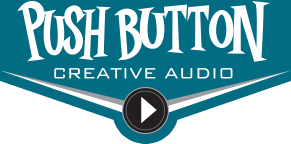
The Emotional Impact of Music
Have you ever listened to a song that was so hauntingly beautiful it made you cry? Do you wonder why the upbeat songs that you listen to in the car make you hit the gas pedal a little harder than more mellow options? As it turns out, music can make the parts of your brain responsible for emotions feel things. It isn’t unusual for a song to stir up emotions of all kinds, ranging from nostalgia to sadness to happiness.
How does it all work? Here’s what you need to know about using audio branding to tug at the heartstrings of your target consumers.
Music and Memory
Some emotions stem purely from the memories of a song. For example, if you spent a good part of your childhood listening to music from the 1950s, due to your parents’ preference for doo wop, then hearing one of those songs randomly on the radio or internet will give you a feeling of nostalgia.
How does this translate into audio branding? If you want to sell a product that has vintage overtones or is a newer version of something that people loved as children, then evoking those memories via music is the key to making a sale. This is often why vintage stores play background music from decades past, as well as why a newer version of a toy, for example, a Care Bear from the 1980s, is sold using music from that time period.
By making people think of the past in a pleasant, nostalgic way, they’re more likely to make that purchase. This is all due to the power of music and the memories that it can stir up.
Creating a Dopamine Hit
Dopamine is your brain’s feel-good chemical. Anyone who enjoys something, like coffee, on a regular basis realizes just how good they feel when they take that first sip of the day. (While dopamine is also one of the chemicals behind addictions to drugs and other substances, let’s keep this positive, okay?) When you do something or even hear a song that makes you happy, it’s because the dopamine sensors in your brain become active, making you feel pleasure. This is why songs from your favorite band make you feel happier than similar songs from bands of the same genre.
Utilizing this brain chemical and its applications to music can be a good way to make your product’s branding appeal to certain consumers. If you’ve done your research and realized that your target market prefers a specific style of music, then it’s time to use that knowledge to your advantage. For example, if you sell skateboards and know that the people who tend to buy them love punk or ska-style music, then you should utilize that type of music in your commercials, as well as in your stores. By making your customers get that rush of dopamine, they’re more likely to make a purchase.
Spurring You into Action
Dance, dance, dance! Sometimes, music makes you want to dance. Those happy drumbeats lead to soulful toe-tapping, or the moody guitar riffs inspire some air guitar movements. A cheerful, swift, and bouncy beat makes you want to dance, and when possible, you get up and do so. All of this is normal. Other things that are normal? Your body is responding to the music by slowing down or speeding your heart rate and the number of breaths you take per minute. You basically become one with the music as it makes you get up and move around.
This is why you find some stores playing specific tunes. They want to keep you up and moving so that you buy more. It’s also why jingles tend to have catchy tunes that stick in your brain for long periods of time. The better that you remember the music, the more likely you are to buy the products. In fact, 65% of listeners have purchased a product or service from a brand they heard advertised on podcasts, according to Edison Research’s Super Listeners report. If you use danceable tunes as part of your company’s branding, then those songs will forever remind your target market of the items that you make or sell, and when they hear them, they may seek out your products for purchase.
Music and Shopping
It’s no surprise that studies show that music matters to shoppers. One good example of this takes place in the wine section of a grocery store. When French music was played, people purchased more French wines. However, when the music switched to a German tune, they reached for the German wine instead. The only difference was the music, showing just how powerful it can be when trying to influence shoppers to buy certain products.
Ideally, the music played should fade into the background just enough to be noticeable but easily forgotten. If it’s too obvious, then it may have the opposite effect and make people less likely to shop. After all, no one wants to listen to jingles while in a department store or the grocery store. However, songs that are a part of those jingles, without the wording, can be enough to influence consumers to buy.
There’s another component here as well: how well the shoppers know the songs. When esoteric tunes are played, people will actually focus more on the music than their shopping. This leads to fewer purchases. On the other hand, when they know the songs well enough to have them fade into the background shoppers tend to stick around and buy more, not even realizing that they’re being subtly targeted and having their emotions manipulated by the music.
The Role of Music in Branding
They’re the perfect pair! Emotions and music go hand in hand. This is why those jingles and popular songs used to promote products work as well as they do. Without the emotional connection, people wouldn’t connect a feeling of happiness with a new sweater or a pair of shoes. By finding genres that appeal to certain audiences, you can control who buys your goods. As the examples here have shown, music plays a crucial role in branding and shopping, ensuring that your items are the star of the show, rather than lost in the crowd.







